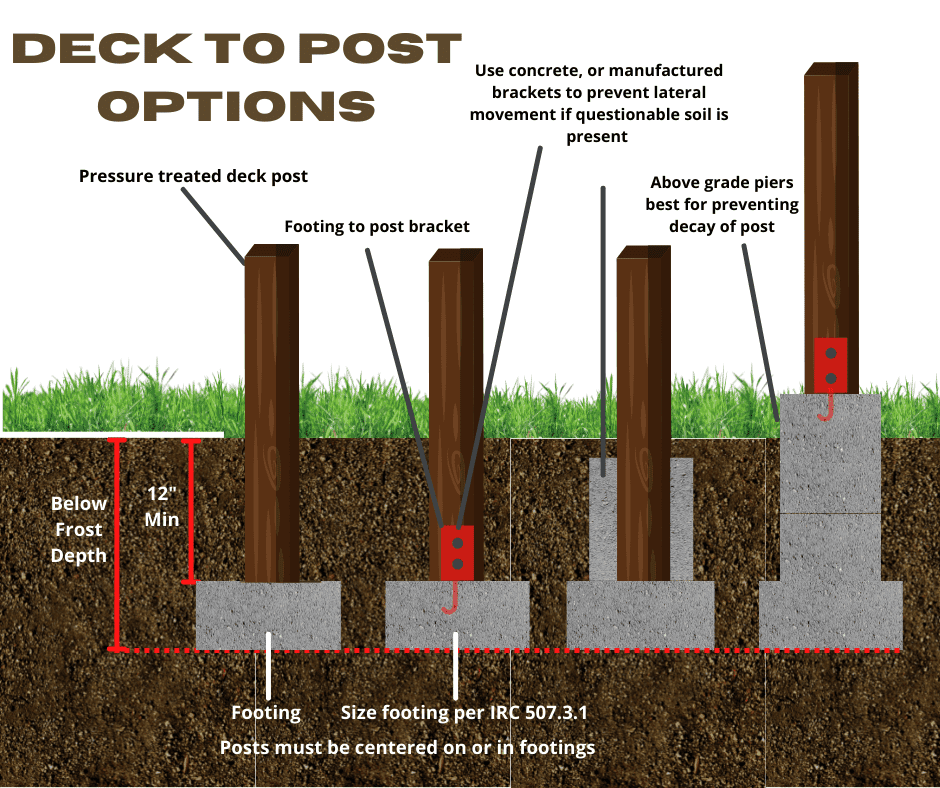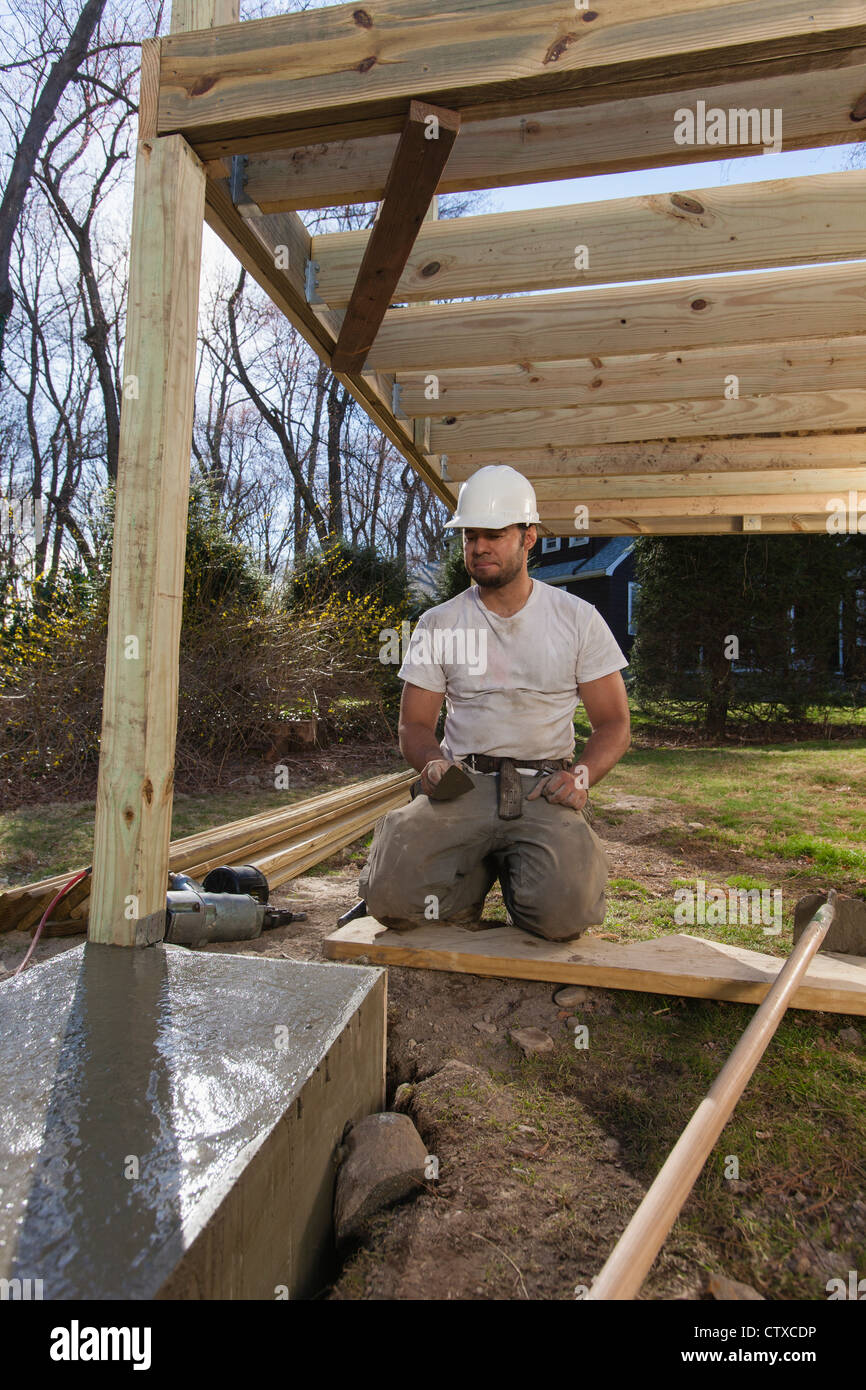Engineered for Success: The Science Behind Durable and Durable Deck Footings
Engineered for Success: The Science Behind Durable and Durable Deck Footings
Blog Article
Selecting the Right Deck Footings for Security and Sturdiness
When it comes to developing a deck, among one of the most essential decisions you will make is choosing the ideal footings for stability and toughness. The longevity and safety and security of your deck depend heavily on the kind of footings you select, as they provide the essential assistance and stability to endure the test of time. With a myriad of alternatives offered, it can be frustrating to identify which grounds are best suited for your details demands. In this discussion, we will certainly check out the different sorts of deck grounds, think about the important elements to weigh when making a choice, and look into the advantages and disadvantages of various choices. By the end, you will certainly have a clearer understanding of the options at hand and be far better outfitted to make a notified decision for your deck project.
Kinds Of Deck Grounds
There are numerous kinds of deck footings that can be utilized, each offering distinct advantages and considerations. One typical kind of footing is the concrete pier ground. These grounds are composed of a round hole full of concrete, which gives a solid structure for the deck blog posts. Concrete pier footings are relatively simple to set up and offer superb stability, making them a popular option for numerous deck tasks.
An additional sort of ground is the helical pile footing. Helical piles are steel shafts with helical plates connected to them. These grounds are mounted by screwing them into the ground, which produces a protected structure for the deck. Helical heap grounds are optimal for locations with challenging soil problems, as they can be installed in almost any sort of soil. They additionally permit easy adjustment and progressing of the deck if needed.
Alternatively, some home builders choose precast concrete grounds. These grounds are made of sturdy concrete and come in different sizes and shapes to suit various deck styles. Precast concrete grounds are hassle-free to mount and supply a steady base for the deck structure.
Finally, one more option is the post-in-anchor footing system. This kind of footing entails driving a steel support right into the ground and connecting it to the deck blog post. It uses adaptability in terms of placing the deck posts and is ideal for decks with lightweight structures.
When choosing the best kind of deck ground, it is vital to take into consideration elements such as dirt conditions, deck lots, and local building ordinance (Deck Footings). Consulting with a professional specialist or architectural engineer can assist make certain the ideal footing is selected for a secure and safe deck
Elements to Think About When Choosing Footings
When choosing the proper grounds for a deck, it is crucial to very carefully think about different aspects such as soil problems, deck tons, and adherence to local building regulations. These elements play a considerable duty in guaranteeing the security and durability of the deck framework.
The type of dirt on which the deck will be built identifies the type of grounds called for. On the various other hand, decks constructed on clay or expansive dirts might require grounds that can suit the soil's tendency to expand and agreement.
An additional important variable is the deck load. The weight of the deck, consisting of the products made use of and any possible online lots such as furniture or gatherings, need to be considered when picking grounds. The grounds need to be made to bear the weight of the deck and distribute it evenly to prevent any type of structural problems or failures.
Last but not least, adherence to local building regulations is vital. Structure codes differ from region to area, and it is crucial to adhere to the particular needs established by the regional authorities. Deck Footings. These codes ensure that the deck is constructed safely and fulfills the essential standards for structural stability and load-bearing capability
Concrete Footings: Advantages And Disadvantages

Concrete footings offer several advantages and disadvantages when utilized as the structure for a deck. On the positive side, concrete grounds supply superb security and sturdiness.
Another benefit of concrete grounds is their versatility. They can be put right into various shapes and dimensions to suit different deck layouts and configurations. Concrete grounds can be tailored to fit the particular requirements and requirements of the deck framework.
Nevertheless, there are likewise some drawbacks to using concrete grounds. One major negative aspect is the cost and labor entailed in their installment. Concrete footings need excavation and often need the aid of hefty equipment. This can enhance the overall expense of the deck job and may need expert help.

Helical Piers Vs. Sonotubes: Which Is Much better?
In thinking about the foundation choices for a deck, the comparison in between helical piers and sonotubes is essential in identifying the superior selection. They are turned right into the ground utilizing hydraulic machinery, providing a secure and long lasting foundation for the deck.
When it involves stability and sturdiness, helical piers have the top hand. The helical plates on the piers develop a strong hold with the soil, changing or preventing any type of movement of the deck. This is specifically valuable in areas with unstable or shifting soil problems. Sonotubes, on the other hand, count exclusively on the concrete filling for security, which might not supply the exact same degree of toughness and resistance.
In regards to setup, helical piers are reasonably easier and faster to install contrasted to sonotubes. The hydraulic equipment made use of to twist the piers right into the ground makes certain a effective and fast process. Sonotubes, on the other hand, call for excavating openings and pouring concrete, which can be time-consuming and labor-intensive.
Furthermore, helical piers are a more versatile choice. They can be used in various dirt conditions and can be adjusted or strengthened if required. Sonotubes, on the various other hand, might need extra support, such as rebar, in particular dirt problems or areas with high tons requirements.
Picking the Right Footings for Your Deck's Measurements
For ideal architectural integrity, it is necessary to carefully select the ideal find out footings that straighten with the measurements of your deck. The dimensions of your deck, including its length, size, and elevation, play a substantial role in identifying the kind and size of grounds called for.
When picking footings for your deck, it is very important to take into consideration the load-bearing ability of the dirt. The weight of the deck, combined with the weight of any type of furniture or individuals on it, applies a significant pressure on the footings (Deck Footings). As a result, it is critical to select grounds that can appropriately sustain this weight without moving or sinking with time.
Larger decks with greater measurements need bigger footings to offer sufficient stability and assistance. The form of the footings, whether they are square or round, depends on the design and format of the deck.
Conclusion
In final thought, choosing the best deck footings is critical for guaranteeing security and resilience. Factors such as the type of grounds, the deck's dimensions, and the pros and disadvantages of various choices should be taken into consideration.
These grounds are composed of a round hole filled with concrete, which gives a strong foundation for the deck posts. Concrete pier footings are relatively easy to install and provide exceptional stability, making them a preferred choice for find out here now lots of deck jobs.
Precast concrete grounds are hassle-free to mount and provide a steady base for the deck structure.
It offers flexibility in terms of positioning the deck messages and is suitable for decks with lightweight frameworks.
Concrete footings supply numerous benefits and disadvantages when utilized as the foundation for a deck.
Report this page